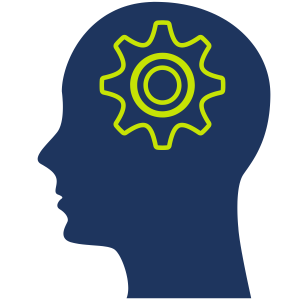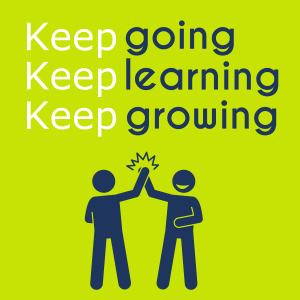
Focus Area 7: At-Risk Behaviors
Summary
In developing your knowledge, skills, and confidence around At-risk Behaviors, you have two big challenges;
- Learning to recognize the difference between normal, healthy risk-taking and potentially harmful, unhealthy risk-taking.
- Becoming comfortable talking with youth about any unhealthy risk-taking you observe.
To be most effective in your role, it helps to remember how everything you learned in Focus Area 2: Youth Development ties in with the learning presented in this module as it relates to adolescent brain development.
Being able to distinguish healthy behavior from unhealthy behavior requires knowledge of both. Remembering the different developmental tasks associated with healthy risk-taking behavior at each age milestone will enable you to adjust your expectations to match where a youth is in the development process and any unique needs they may have.
The information presented on adolescent brain development throughout this training is intended to give you new insights so you can better understand why youth do the things they do in the context of normal development. But there is an unintended consequence to watch out for - don’t let your understanding about the brain development process excuse teens for making unhealthy decisions. You still have to know when and how to address unhealthy behaviors when you see them.
The adolescent brain matures in part through encountering life lessons, rather than being sheltered or rescued from such lessons. You have to learn to tell the difference between healthy risk-taking and unhealthy risk-taking to ensure the youth you serve are able to thrive.
It’s a fine balance that you’re learning to develop and an important responsibility. But it’s not on your shoulders alone. Helping youth avoid unhealthy behaviors takes a team effort – parents and extended family members, teachers, mental health and medical professionals, community members, your supervisors – are all part of the team. Developing your comfort level in collaborating with these various supports demonstrates your strength as a youth worker. The best ethical practice to use as a general rule is this:
Whenever you are concerned about a youth’s behavior, seek guidance from your supervisor.

Understand what drives risk-taking behavior:
- It’s a natural part of human development
- It’s how adolescents make the transition to adulthood
- Environmental factors such as peers and societal factors play a role
- The prefrontal cortex of the adolescent brain, the area responsible for critical thinking, is not yet fully developed
Recognize the warning signs of unhealthy risk-taking behaviors:
- Being alert for warning signs will help you intervene earlier
- Clues to be aware of:
- There are several concerning behaviors happening at the same time
- The concerning behaviors appear suddenly
- The behaviors are extreme
- The behaviors persist for a significant amount of time and cause other problems
Learn effective communication strategies for talking with young people about unhealthy risk-taking behaviors:
- Express genuine care and concern
- Let them know they’re not alone
- Promote their self-esteem and self-respect
- Show positivity and enthusiasm
- Provide guidance, not criticism
- Engage them in developing strategies they can use
Know your role as a youth worker and the importance of consulting with your supervisor:
- You’re a part of a team; draw on your supervisor’s expertise and experience
- You have mandated reporting requirements to keep in mind
- Be cautious about promising confidentiality before you understand the youth’s situation
At-Risk Behaviors Quiz

Your role in recognizing and addressing unhealthy risk-taking behavior in youth can make a positive difference in their development. Everything you’ve studied in this focus area has set you up for greater success in working with youth to avoid unhealthy behavior.
Knowledge alone is not enough - put your learning into practice. Try at least one new technique in your very next program. Then try another the next day. Keep practicing. You’ll soon find this comes second nature to you.
Now you will demonstrate your learning by passing an 8-question quiz. If you’ve paid attention to the videos and carefully studied this written material, you are well-prepared for the quiz. You need a score of at least 80%. Good luck!

“Do it from the heart or not at all.” ― Jeanette Winterson, The Passion
You're doing great! You're growing both personally and professionally. Keep it up, you only have one more module to go before you're ready for the final quiz to earn your certificate in The Art & Science of Youth Work. Want to expand your knowledge in this focus area? Click the link above and explore.
If you prefer to print this section of The Art & Science of Youth Work certificate course, click on the "Print Friendly" icon to select how you would like it to print. You can remove images and icons.
